SUMMARY
This is AI generated summarization, which may have errors. For context, always refer to the full article.
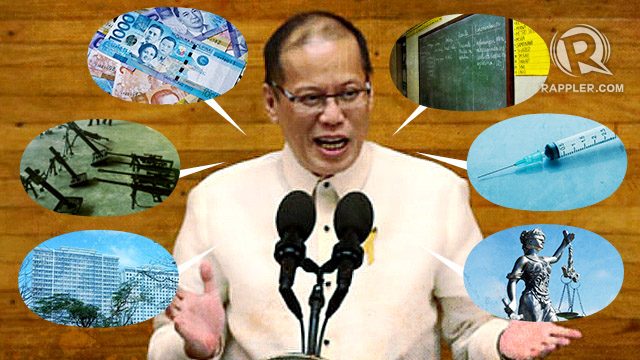
AT A GLANCE
- On corruption, Aquino walked the talk. In 2012, he sought the impeachment of former chief justice Renato Corona. Opposition Senators Juan Ponce Enrile, Ramon “Bong” Revilla, and Jinggoy Estada are also in jail for alleged misuse of their PDAF. But convictions are expected to take long.
- While it is under Aquino that the Philippines became known as the “next Tiger economy”, the challenge of inclusive growth remains.
- The administration’s flagship anti-poverty program, the Pantawid Pamilyang Pilipino Program, has now included 4.4 million household-beneficiaries. But some recipients say little has changed in their lives.
MANILA, Philippines – From a reluctant presidential candidate to someone at the helm of the country for 5 years – simply put, that’s what President Benigno Aquino III has been. With only a year left in Malacanang, has he fulfilled his promises from his 2010 campaign?
Aquino’s “Social Contract with the Filipino People” was the platform of his campaign. The document includes a 16-point agenda aimed at creating social and structural change. Rappler reviewed this document to determine how he has fared as president.
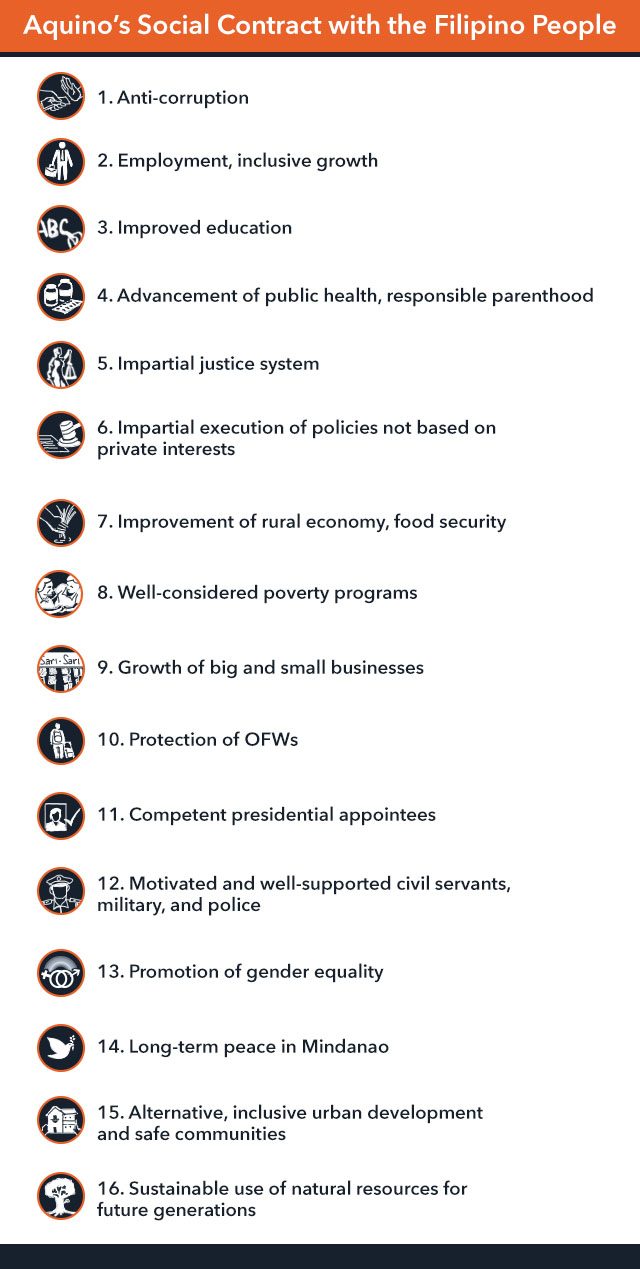
We classified these 16 points into 7 groups: Corruption, Economy, Poverty, Justice, Overseas Filipino Workers, Peace and Order, and Environment.
CORRUPTION
From a president who tolerates corruption to a president who is the nation’s first and most determined fighter of corruption.
‘Kung walang corrupt, walang mahirap’
This has been the battle cry of Aquino since the 2010 campaign. He publicly denounced the preceding administration and even sought the imprisonment of former president Gloria Arroyo. In all his State of the Nation Addresses (SONAs), Aquino consistently blamed corruption during the Arroyo administration for present problems. To this day, the courts, however, have failed to convict Arroyo for plunder.
Aquino walked the talk. In 2012, he sought the impeachment of former chief justice Renato Corona, one of the so-called midnight appointees of Arroyo. It was a brilliant move, with foresight. After all, many issues involving the administration’s policies went through the Supreme Court for debate after the trial.
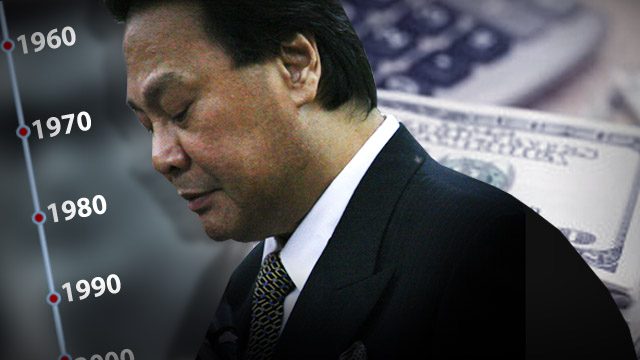
Some may call it ironic but the Aquino administration, whose supposed number one enemy was corruption, was challenged with corruption issues as well, as some allies were linked to the misuse of their own multi-million Priority Development Assistance Fund (PDAF).
The alleged pork barrel queen Janet Lim Napoles is now in prison. Opposition Senators Juan Ponce Enrile, Ramon “Bong” Revilla, and Jinggoy Estada are also in jail for alleged misuse of their funds coursed through non-existent or bogus non-governmental organizations of Napoles. All of them, however, have yet to be convicted. (READ: INFOGRAPHIC: How NGOs get their hands on the pork barrel)
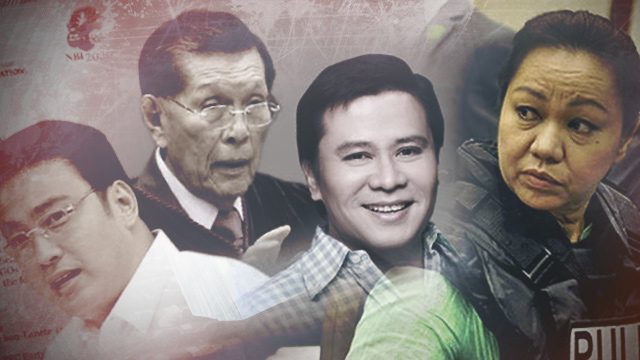
Most administration senators linked to the pork barrel scam, however, remain untouched to date. Only former Customs chief Ruffy Biazon has been charged with malversation.
It wasn’t long after when the administration’s Development Acceleration Program backfired. While they say DAP is different from PDAF, critics have called it the President’s “pork barrel.”
Even the administration’s transparency on the national budget failed to stop criticism. The Department of Budget and Management posted on its website the projects funded by DAP. But it was incomplete, as there are unspecified projects or those identified only as “various infrastructure projects” and “various (women) empowerment programs.” What exactly were these projects and how much was spent for each is still unclear. (READ: Where did DAP funds go?)
Then there’s the wide-scale corruption at the Bureau of Corrections. Nothing new. But what is appalling is the extent of the freedom enjoyed by wealthy criminals in jail while carrying out their sentences. A surprise raid revealed that many high-profile inmates enjoy luxuries inside their prison cells (READ: IN PHOTOS: Drug lords, murderers, and high living in Bilibid). It’s been a long-standing issue in the agency. Time and again, officials are relieved, new heads are appointed, investigations are conducted but the problem persists.
From Presidential appointees chosen mainly out of political accommodation to discerning selection based on integrity, competence and performance in serving the public good.
Aquino questioned the appointees of Arroyo, especially those midnight appointments done during the ban, but he himself had questionable appointments as well. The term KKK or “Kaibigan (Friend), Kaklase (Classmate), Kabarilan (Shooting buddies)” was coined during the start of his term, following his appointment of friends to government posts.
But among all of his numerous friends in office, what struck the public the most was Aquino’s loyalty to Purisima. The two go a long way back, with Purisima being Aquino’s security aide during former president Corazon Aquino’s administration.
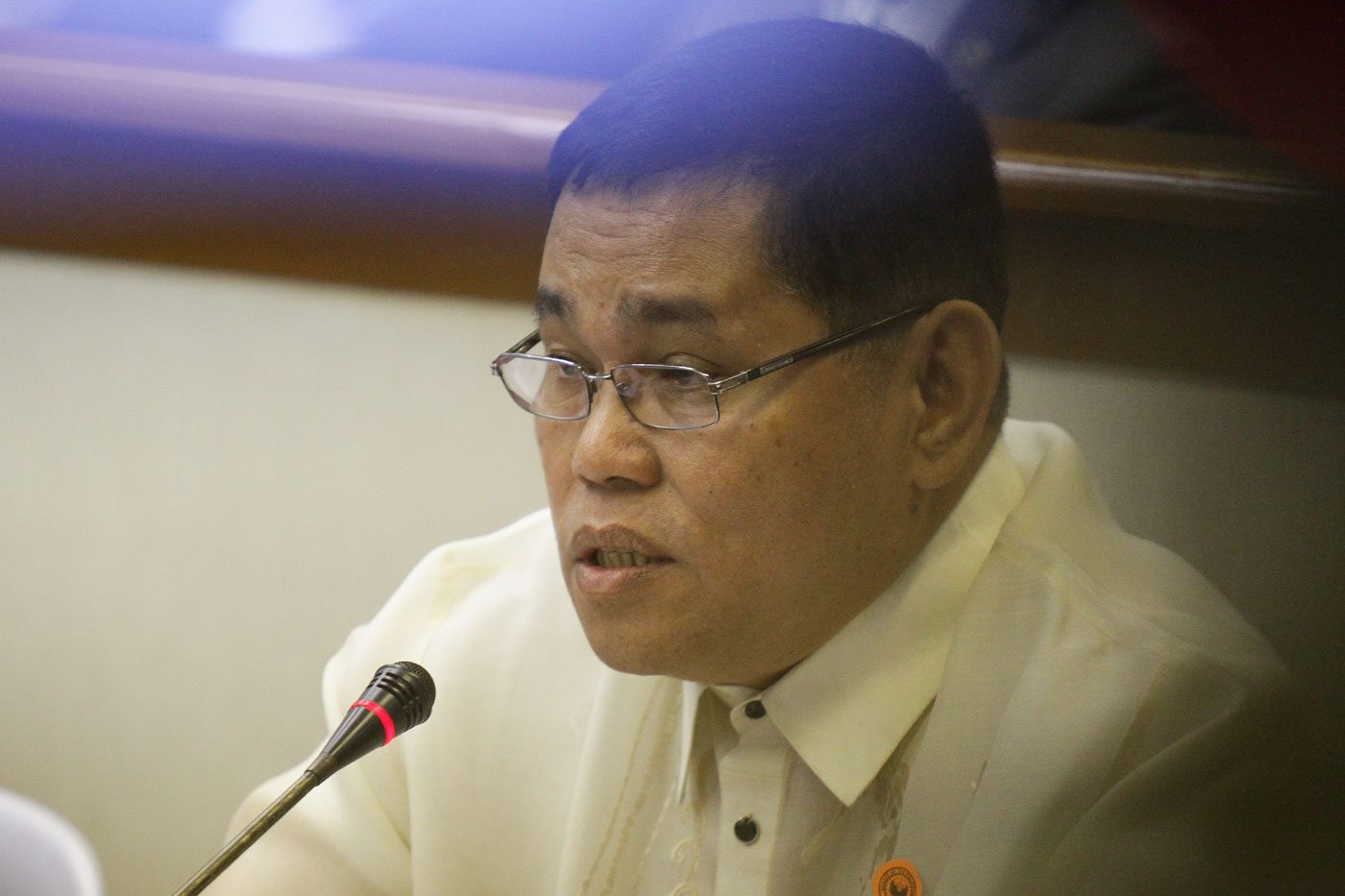
Aside from the multi-million-peso corruption allegations against him, Purisima was questioned for his involvement in the Mamasapano incident while under suspension as PNP Chief. Despite calls for him to do so, Aquino refused to sack his long-time ally. It took the Office of the Ombudsman to act on it.
The President has exhibited political will in the cases of Arroyo, Corona, and the highly controversial Reproductive Health and Sin Tax Reform laws. He has to flex his muscles some more in the case of the Freedom of Information bill, which continues to languish in the administration-controlled Congress.
(READ: Corruption at LTO, LTFRB: Unfit drivers, vehicles on the road and Part 2: Corruption at the LTO)
ECONOMY
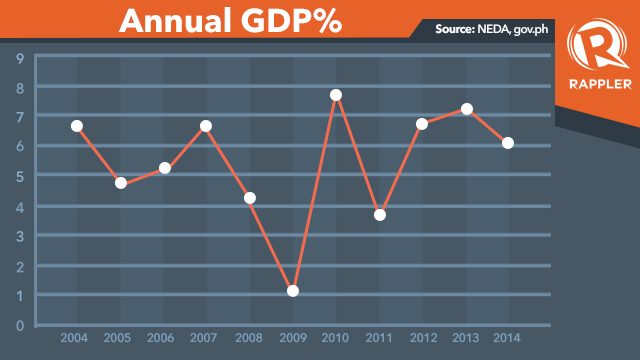
The Aquino administration prides itself in its economic gains.
The Asian Development Bank sees a continued “robust expansion” in the country. Local and foreign analysts also expect a gross domestic product (GDP) of 6.4% during the Aquino administration, higher than the 4.8% average during the 9-year Arroyo term.
Data from the World Economic Forum in 2013 also showed the Philippines as being the “most improved country” overall, rising to 52nd place. In 2010, the country ranked only 85th. The improvement is the highest in the ASEAN region since 2010.
Rankings of Competitiveness Pillars in the Philippines
| 2010 | 2011 | 2012 | 2013 | 2014 |
Change since 2010 |
|
| Global Competitive Index | 85 | 75 | 65 | 59 | 52 | +33 |
| 1. Institutions | 125 | 117 | 94 | 79 | 67 | +58 |
| 2. Infrastrcuture | 104 | 105 | 98 | 96 | 91 | +13 |
| 3. Macroeconomic environment | 68 | 54 | 36 | 40 | 26 | +42 |
| 4. Health & primary education | 90 | 92 | 98 | 96 | 92 | -2 |
| 5. Higher education & training | 73 | 71 | 64 | 67 | 64 | +9 |
| 6. Goods market efficiency | 97 | 88 | 86 | 82 | 70 | +27 |
| 7. Labor market efficiency | 111 | 113 | 103 | 100 | 91 | +20 |
| 8. Financial market dev’t | 75 | 71 | 58 | 48 | 49 | +26 |
| 9. Technological readiness | 95 | 83 | 79 | 77 | 69 | +26 |
| 10. Market size | 37 | 36 | 35 | 33 | 35 | +2 |
| 11. Business sophistication | 60 | 57 | 49 | 49 | 46 | +14 |
| 12. Innovation | 111 | 108 | 94 | 69 | 52 | +5 |
Source: World Economic Forum The Global Competitiveness Report 2014–2015
WEF data specifically show the improvement of the Philippines in terms of macroeconomic environment, business sophistication, institutions, innovation, and infrastructure.
Since the start of the Aquino administration, the Philippines has received at least 9 credit rating and outlook upgrades from international agencies, the latest of which is from the Tokyo-based Japan Credit Rating Agency Ltd (JCR) in July. It tells investors it is safe to do business in the country, and encourages them to put huge capital here.
While it is under Aquino that the Philippines became known as the “next Tiger economy”, there is still the challenge of inclusive growth. Numbers, they say, do not lie. People who consistently pin their hopes on politicians for better lives see their lives unchanged.
For an economy to prosper, there needs to be an efficient public transport system. Commuting using our train system has become a nightmare. Thousands of passengers line up under the heat and rain, only to stand in packed coaches. After a technical glitch, unfortunate passengers end up walking on train tracks, or end up injured. (READ: End Metro Manila traffic, fund sustainable transport)
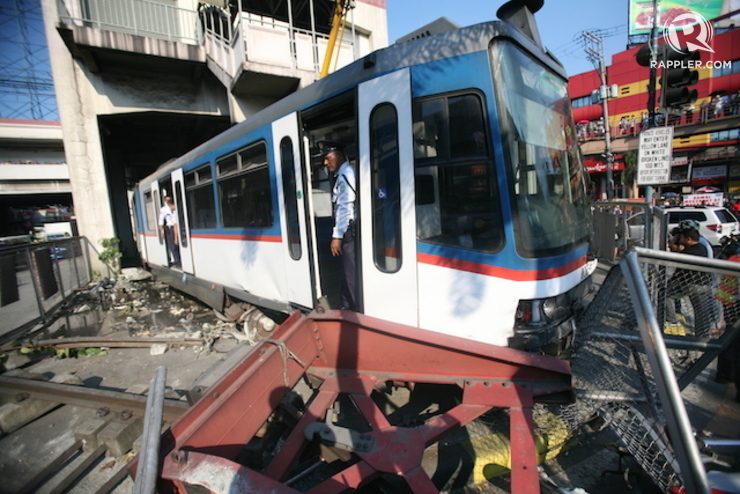
Operating at the level of about 500,000 passengers per day on a capacity of only 350,000, the Metro Rail Transit (MRT-3) trains continue to be worn down from excessive burden.
It didn’t help, either, that amid all the failures of the MRT, the transportation department approved the fare hike and Malacañang issued “insensitive” remarks urging commuters to use other modes of public transportation. (READ: Commuters to Coloma: Why not take the bus yourself?)
MRT3 passengers are at the receiving end. They will have to wait a little bit longer, as delivery of new coaches is delayed. The deliveries are set to begin in January 2016, instead of late 2015.
POVERTY
While the Aquino administration celebrates economic development under its term, many Filipinos have yet to feel the gains.
The administration’s flagship anti-poverty program, the Pantawid Pamilyang Pilipino Program, has now included 4.4 million household-beneficiaries. But some recipients say little has changed in their lives. At best, whatever gains have been made must be continued and further improved on.
– Rappler.com
Conclusion: Part 2: Did Aquino deliver on his promises?
Add a comment
How does this make you feel?
There are no comments yet. Add your comment to start the conversation.